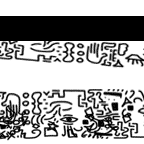Short Position Piece on TRPJ
| Due Dates: | Requirements: |
|---|---|
|
Topic Selection Free-Writing—3 April 2024 Working Draft—15 April 2025 Final Draft (and reflection piece)—24 April 2025 |
|
Objective
This is the second year of the Theorizing Race Power, and Justice (TRPJ) Liberal Education Requirement. This assignment involves writing a short paper that presents an argument about how the TRPJ requirement can best contribute to the larger UMD undergraduate degree program.
Procedure
In class, next week, you will answer the following question in an in-class free-writing assignment: "What are your thoughts about the Theorizing Race Power, and Justice Liberal Education Requirement? Which aspects of it are the most helpful to you as a part of your undergraduate education? And, which assigned reading or film so far has best contributed to your understanding of the issues associated with the TRPJ liberal education program?"
Consider, too, which particular scene from that chosen work you will focus on in order to support your argument.
Revise your argument into a 3-page working draft by
- Formulating a thesis statement about the TRPJ requirement and linking it to one text from the course's list of required readings/viewing.
- Referring to specific words, sentences, or scenes, from the work in question.
- Including an MLA-formatted entry at the end of your draft in accordance with formatting guidelines.
Be ready to share a draft of this assignment via GoogleDocs on 15 April 2025, for peer editing. Be ready to share the document with at least one peer editor and with me (the instructor).
After considering feedback you receive from peer editors and reconsidering your own argument, revise your paper. You may also sign up to meet with me to discuss a draft at this point.
Proofread your draft to remove spelling and grammatical errors.
Submit the completed final draft via Canvas by the end of the day on 24 April 2025.
Complete an in-class reflection assignment on 24 April 2025.
Close Reading
Close reading means paying careful attention to details in a written work. Since you will be looking more closely at your chosen work than most people, your paper can offer engaging perspectives that challenge readers' expectations. In focusing on a specific scene or character from a text or film, you may ask yourself the following questions:
What, literally, takes place in the scene (it is often a good idea to begin with the literal)? Which characters are present? Which characters speak and who listens?
How does this scene fit into the larger work? How does this character fit into a larger constellation of characters in the work?
How does a chosen character's racial identity enter into your chosen scene as a factor determining their situation, their development, or their conflicts with other characters?
How is this scene or this character different from any other scenes or characters in the larger work?
Writing Tips
I have based the following writing tips on common difficulties that students encounter when writing papers for this class.
Develop an arguable and interesting thesis statement that applies directly to the topic (that encapsulates your stance on TRPJ).
Organize your argument around this thesis statement. Divide your argument into arguable subtopics, each with its own arguable topic sentence.
MLA format means you should include a list of works cited at the end of your paper, even if it only includes one work. For example:
Douglass, Frederick. Narrative of the Life of Frederick Douglass, an American Slave. Modern Library, 2000.
Get Out, written and directed by Jordan Peele, performances by Daniel Kaluuya, Allison Williams, Bradley Whitford, Universal Pictures, 2017.
Some grammatical tips:
Avoid contractions when writing college papers. Replace they're with they are and don't with do not (these are just a few examples of the numerous possible contractions.
Present tense: use this for events in the work that you are analyzing in this paper. This is the tense we will have been using in class discussions, so keep doing so in this paper. The story currently exists as ink on paper or pixels on a screen, so refer to events as if they are currently happening.
The word it's (with an apostrophe) is a contraction of it is. The word its (without an apostrophe) is the possessive of it.
